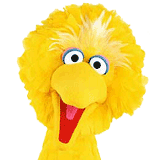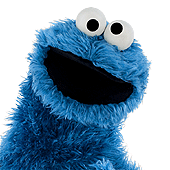For the record, the Puppet Up! characters are *not* officially Muppets, not least because Henson sold the use of the name to Disney (Sesame and other non-profit or special projects, such as "Panwapa," use the name with special permission from Disney, but Henson can no longer describe the Fraggle Rock characters as Muppets in promotion; that doesn't change what they are, of course). Puppet Up! uses a mix of refurbished puppets from before the sale (and especially from projects like "Dog City" and "Animal Jam" which were *not* sold to Disney) but the new ones cannot be called Muppets and Henson deliberately tries to set them apart; the aesthetic for the new puppets is sort of halfway between Muppet and Creature.
Almost anything made by the Creature Shop (including the Sinclairs) are Creatures, officially in press material and the Creature Shop Workshop, and unofficially on Muppet Wiki. Muppet Wiki makes sole exceptions for three projects, from a time when the Creature Shop was experimenting with foam-covered "hard puppets" over animatronics, where the aesthetic was more Muppet-like (though perhaps not completely), and where even crew members and performers on the shows (like Karen Prell) call them Muppets: Mother Goose Stories, Ghost of Faffner Hall (which also recycled a ton of Muppets), and to a lesser extent, Dog the toy dinosaur in "Living with Dinosaurs" (one could argue on that one, but he definitely *looks* and acts like a Muppet, in contrast to The StoryTeller or MonsterMaker beasts and so on).
Finally, though at Muppet Wiki we haven't bothered with recategorizing since it gets messy, there's "The Muppet Christmas Carol." The Ghosts of Christmas Past and Yet to Come were both built and designed by the Creature Shop, and definitely have that realistic Creature look. In contrast, the more cuddly, traditionally Muppety Ghost of Christmas Present was designed at the Muppet Workshop by Ed Christie and compny (though I wouldn't be surprised if some of the technical gizmos came from the London Creature Shop). So in general, what counts as a Muppet depends on three things: where a puppet was made, more importantly what aesthetic was used and what effect it's supposed to add (compare the comically scary Uncle Deadly to the genuinely creepy Skeksis and so on), and thanks to the sale dividing up the house, legal designation. That's as far as official presskits and promotion and Muppet Wiki and such go. What an individual viewer chooses to think of as a Muppet or Muppetlike from the range of Henson/Sesame/Disney-owned productions is up to them.
 Welcome to the Muppet Central Forum!
Welcome to the Muppet Central Forum!
.jpg) Christmas Music
Christmas Music
 Macy's Thanksgiving Parade
Macy's Thanksgiving Parade
 Sesame Street debuts on Netflix
Sesame Street debuts on Netflix
 Back to the Rock Season 2
Back to the Rock Season 2
 Sam and Friends Book
Sam and Friends Book
 Jim Henson Idea Man
Jim Henson Idea Man
 Bear arrives on Disney+
Bear arrives on Disney+